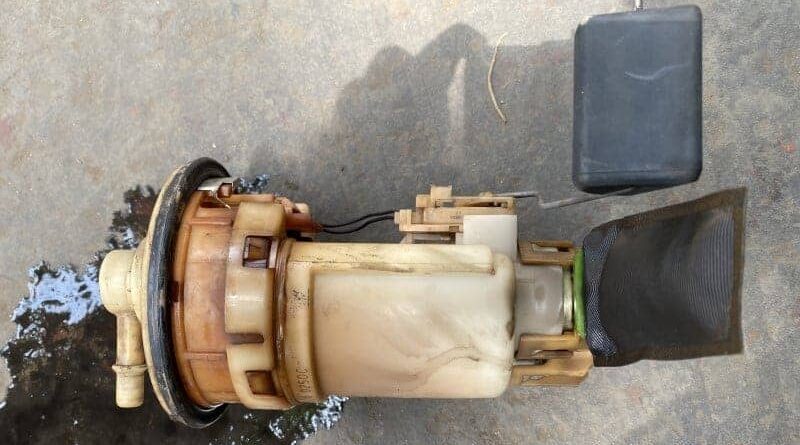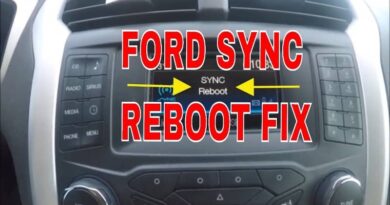
Your car’s gasoline pump is an essential part. It is in charge of supplying petrol to the engine, resulting in combustion. Your automobile won’t start if the gasoline pump isn’t working. Unfortunately, changing a damaged fuel pump can lead to more issues than it fixes.
Replacing a fuel pump can be challenging, resulting in problems including recurrent engine stalling and a broken fuel gauge. But every common fuel pump problem can be fixed; you just need to know what to do when it does.
Watch out for this video if you need clarification on what to do if you recently replaced your petrol pump but still have issues. Let’s look at some of the common issues faced after replacement.
Is It Hard To Replace a Fuel Pump
Fuel is pumped from the tank to the engine by the fuel pump, which also maintains the required fuel pressure for combustion. The gasoline pump may eventually stop working due to deterioration, impurities, or electrical problems.
When the fuel pump malfunctions, the engine may stall, accelerate slowly, or even stop working. In such cases, replacing the fuel pump becomes necessary to ensure proper engine performance.
Signs that Indicate the Need for Fuel Pump Replacement
Several signs indicate a failing fuel pump, including:
Difficulty Starting the Engine
A faulty fuel pump may need help to supply the required fuel pressure, making it challenging to start the engine.
Reduced Fuel Efficiency
If the fuel pump delivers fuel efficiently, it can increase fuel economy.
Unusual Noises
A failing fuel pump may produce humming, whining, or buzzing noises while the engine is running.
Fuel Odor in the Vehicle
A leaking or damaged fuel pump can cause a noticeable fuel odour inside the car.
Common Problems after Changing Fuel Pump
Fuel Delivery Issues
Sometimes, after fuel pump replacement, fuel delivery problems may persist. This can manifest as engine misfires, hesitation, or lack of power during acceleration. It could be due to clogged fuel filters, restricted fuel lines, or improper installation. Proper troubleshooting is essential to identify and resolve these issues effectively.
What To Do After Replacing Fuel Pump
In some cases, car owners may notice a decrease in engine performance after replacing the fuel pump. This can be attributed to incorrect fuel pressure settings or a mismatched fuel pump for the vehicle’s specifications.
Adjusting the fuel pressure or ensuring the correct fuel pump compatibility can help restore optimal engine performance.
Fuel Pressure Problems
Fuel pressure problems can occur after fuel pump replacement. Issues like low fuel or excessive pressure can lead to engine performance issues, including rough idling or hesitation.
Conducting a fuel pressure test and adjusting it to the manufacturer’s recommended specifications can resolve these problems.
Electrical Issues
Improper electrical connections during fuel pump replacement can result in electrical problems. This can cause intermittent fuel pump operation, fuel gauge inaccuracies, or even short circuits. Verifying the electrical connections and ensuring proper grounding is crucial for resolving these issues.
Check Engine Light Illuminates.
After replacing the fuel pump, the check engine light may illuminate the dashboard. This can indicate fuel system-related issues, such as pressure discrepancies or sensor malfunctions.
Using a diagnostic scanner to retrieve error codes and address specific problem areas can help clear the check engine light.
Troubleshooting and Solutions
To address the common problems that occur after changing the fuel pump, consider the following troubleshooting steps:
Checking Fuel Lines and Connections
Inspect the fuel lines and connections to ensure no leaks, blockages, or loose fittings. Tightening loose connections or replacing damaged fuel lines can help resolve fuel delivery issues.
Verifying Fuel Pressure
Check the fuel pressure with a fuel pressure gauge to make sure it complies with the manufacturer’s requirements. If the pressure is incorrect, adjust it accordingly by following the vehicle’s service manual.
Inspecting Electrical Connections
Check all electrical connections associated with the fuel pump, including wiring harnesses and terminals. Verify that the connections are solid and corrosion-free. Cleaning or repairing any damaged connections can address electrical issues.
Clearing Error Codes
If the check engine light remains illuminated after fuel pump replacement, use a diagnostic scanner to retrieve error codes. Address each code individually by following the manufacturer’s troubleshooting procedures.
Once the issues are resolved, clearing the error codes should turn off the check engine light.
Seeking Professional Assistance
If the problems persist or you need clarification on troubleshooting steps, consulting a qualified mechanic or automotive professional is recommended.
They have the expertise and specialized tools to effectively diagnose and resolve complex fuel system issues.
Preventive Measures
To minimize the occurrence of problems after changing the fuel pump, consider the following preventive measures:
Regular Maintenance
Maintain a regular maintenance schedule for your vehicle, including fuel system inspections. By doing so, you may prevent problems from getting worse and make sure the fuel pump is operating at its best.
Using High-Quality Fuel
Using high-quality fuel can reduce the risk of fuel pump contamination and clogging. Following the vehicle manufacturer’s recommendations regarding fuel octane rating and additives is advisable.
Avoiding Contamination
Be cautious when refuelling your car to prevent contaminating the fuel supply. The fuel pump and additional fuel system components can sustain harm from contaminated fuel.
Conclusion
Replacing the fuel pump is required to preserve a car’s performance, but it can present its own set of difficulties. Car owners can successfully handle these issues and guarantee smooth engine operation by being aware of the typical problems that may develop after fuel pump replacement and adhering to the troubleshooting instructions offered.
A trouble-free fuel system can also be aided by regular maintenance, utilizing high-quality gasoline, and taking steps to prevent fuel contamination.
F.A.Q.s
1. What causes a fuel pump to fail?
Wear and tear, impurities in the gasoline, electrical problems, or repeatedly operating the gasoline tank with inadequate fuel can all lead to fuel pump failure.
2. What is the lifespan of a gasoline pump?
Factors such as surrounding circumstances can contribute to the overall lifespan of an averaged ranged fuel pump between the mileage of 100K and 150K.
3. Can a bad fuel pump damage the engine?
A bad fuel pump can potentially cause engine damage if it fails to deliver the required fuel pressure.
Insufficient fuel supply can lead to lean fuel-air mixtures, which can cause overheating and damage to engine components.


